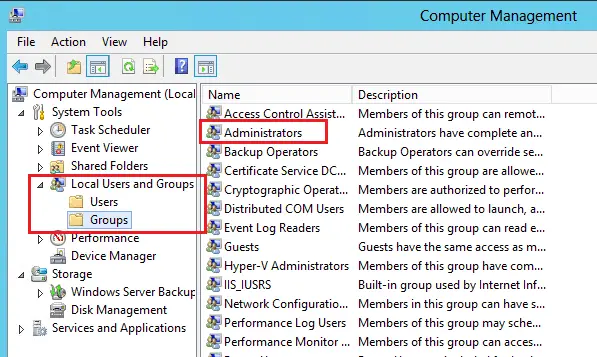The Administrators Group is an integral component of the Windows operating system, acting as the nucleus for all administrative tasks and responsibilities. Whether you’re operating within a standalone environment or leveraging the capabilities of Active Directory, understanding the Administrators Group is pivotal for effective system management. In this article, we’ll dissect its functions, delve into its role in different setups, and explore how it intersects with Active Directory.
Jump to:
- What is the Administrators Group?
- Administrators Group in a Standalone Environment
- Administrators Group in an Active Directory Environment
- Best Practices
- Emerging Trends and Future Outlook
- Conclusion
- References
1. What is the Administrators Group?
The Administrators Group is a built-in, predefined group in Windows operating systems. It provides its members with full control over the system, allowing them to configure system settings, install software, access all files, and perform all administrative tasks. Membership in this group is often restricted to a select few, precisely because of the extensive permissions it offers.

Role in User Management
Being part of the Administrators Group means having the ability to add or remove users, modify user properties, and set user roles and permissions. It also enables the creation and management of other user groups, thereby facilitating organized user management on a Windows system.
2. Administrators Group in a Standalone Environment
Default Rights and Privileges
In a standalone environment, where the computer is not part of a broader network like Active Directory, the Administrators Group is essential for managing the system. The group members have default rights and privileges that include system-level tasks such as editing the registry, managing services, and installing device drivers.
Typical Use-Cases
In small setups like home networks or isolated workstations, Administrators Group members usually handle all aspects of system management. They can:
- Install, remove, or configure software
- Create or modify user accounts
- Manage hardware settings
- Perform system backups and restores
By understanding these core functionalities and typical use-cases, you can better grasp the significant role the Administrators Group plays in standalone Windows environments.
3. Administrators Group in an Active Directory Environment
Differences from Standalone
Active Directory (AD) brings a new layer of complexity to the Administrators Group. While the fundamental privileges remain, additional controls come into play. In an AD environment, you’re not just dealing with local administrative rights; you’re also navigating through domain-level permissions. Domain administrators usually have even broader powers that extend across all machines in the domain.
Group Policies and Domain-Level Controls
In Active Directory, the Administrators Group can be subject to Group Policies, which are sets of rules that govern many aspects of user and system behavior. These policies can limit or extend the permissions and capabilities of administrators. They can be defined at various levels, such as organizational units (OUs), allowing for intricate, layered security measures.
4. Best Practices for Managing the Administrators Group
Security Considerations
Given the powerful permissions attached to the Administrators Group, it’s crucial to manage its membership carefully. Regular audits should be conducted to review who has administrative access. Employ the principle of least privilege, giving users only the permissions they absolutely need for their tasks.
Common Mistakes to Avoid
- Overcrowding the Group: Resist the temptation to make everyone an administrator. More administrators mean more potential points of failure.
- Lax Oversight: Keep a vigilant eye on the activities of administrators. Consider implementing monitoring solutions that can track administrative actions.
- Ignoring Updates: System updates often come with security patches. Ensure that all administrators are vigilant in keeping the system up-to-date.
5. Emerging Trends and Future Outlook
Role of Cloud Services
As more organizations move towards cloud-based solutions, the Administrators Group is no longer limited to managing just local or domain resources. With cloud integrations, administrators now also need to manage services and resources hosted in the cloud, making their role even more intricate.
Zero Trust Architecture
The concept of “Zero Trust” is gaining traction, where the traditional perimeter-based security model is being replaced by identity-based security. In this scenario, even administrators need to go through stringent verification processes, thus affecting the way the Administrators Group functions.
6. Conclusion: The Ever-Evolving Role of the Administrators Group
The Administrators Group in Windows systems has been a cornerstone for system and network management. While its core functionalities have remained relatively consistent, emerging trends like cloud computing and Zero Trust are beginning to redefine its scope and responsibilities. In either a standalone or Active Directory environment, the Administrators Group remains a critical entity, necessitating cautious and informed management.
As IT landscapes continue to evolve, so too will the Administrators Group, adapting to new technologies and security paradigms. Understanding its historical significance and current functionalities is crucial for effective system administration today and in the future.